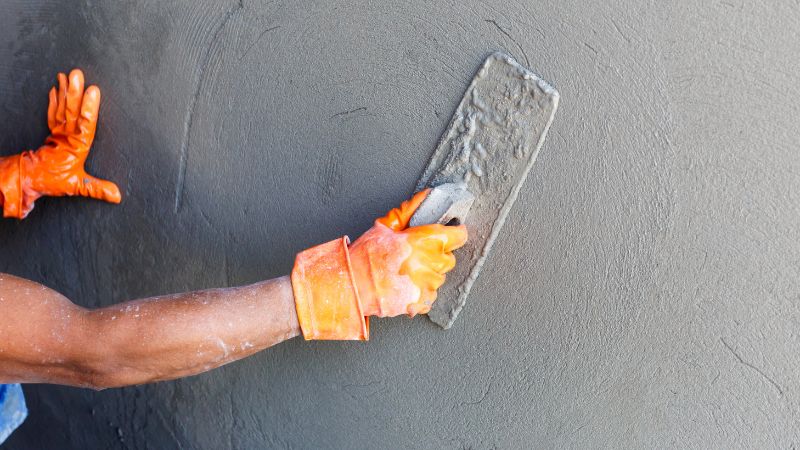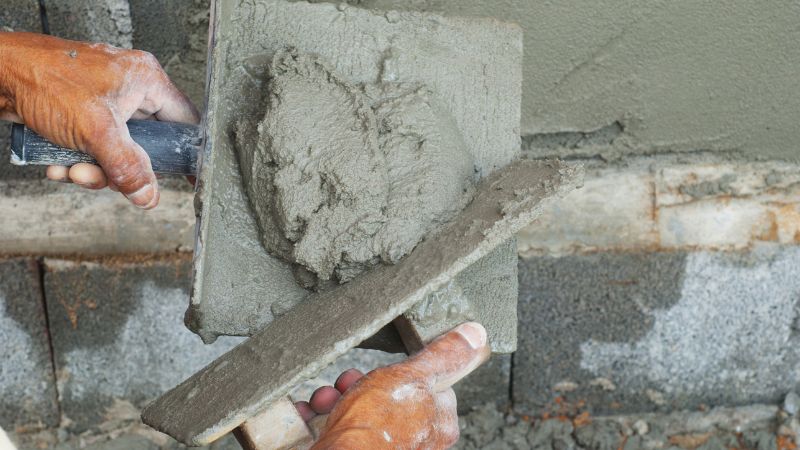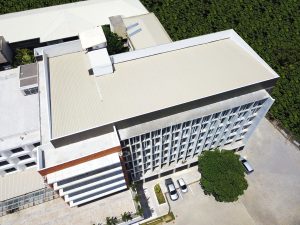Do you often experience moisture-related problems in your home, like mold, mildew, and rust? These are common issues in different buildings in the country because we have heavy rain for most of the year and very hot temperatures in the summer. Unfortunately, these issues affect the integrity of buildings and houses in the country. Hence, we need well-designed and well-built homes to withstand these conditions.
Wall cladding is a protective layer added to walls to help them withstand these environmental conditions. Hence, it has become a popular design in many Filipino homes. Wood, cement concrete, and metal are the popular materials for wall cladding in the country. But did you know that you can mix and match the materials for better durability and cost-efficiency?
This article will discuss the benefits of integrating half-cement concrete and half-metal wall cladding in Philippine houses, including its durability and cost-efficiency.
Understanding Wall Cladding
Wall cladding is a modern architectural design that protects interior and exterior walls. Wall cladding in the Philippines protects the walls from harsh environmental conditions, like heavy rainfall, frequent typhoons, and high temperatures. It also improves air regulation in homes, making the summer months cooler and more bearable.
The most used wall cladding materials in the Philippines are wood, fiber cement, glass, and metal. Each type differs in price and efficiency. Thus, the best one for your home depends on your budget, environment, and aesthetic choices.
Benefits of Cement Concrete in Wall Cladding
Cement concrete is a popular building material in the Philippines because it is made from easily sourced materials.
Other advantages of using concrete cement when wall cladding in the Philippines include:
- Durability and strength of cement concrete. Cement concrete can withstand the country’s changing temperatures, ensuring your home’s strength and longevity. Also, it does not have rot, rust, or mold issues, which are common building problems in the Philippines.
- Energy efficiency and insulation properties. Cement concrete completely seals your home, resulting in an airtight space and improved energy efficiency. Moreover, concrete absorbs heat and slows down its movement, maintaining the coolness of your house even during summer.
- Aesthetic versatility and modern appeal. Cement concrete wall cladding has a contemporary vibe that can also be customized to fit the style and color of your home.
Getting high-quality cement is important to ensure the strength of your house. Union Cement is a high-quality brand you can always rely on for a quality ready-mix and site-mix concrete cement source.
Advantages of Metal Wall Cladding
Another popular material for wall cladding in the Philippines is metal. Like cement concrete, metals improve the durability of your exterior walls while making your home look aesthetically pleasing.
Here are other reasons to choose metal cladding for your homes:
- Longevity and resistance to environmental elements. Metal cladding is made of aluminum, steel, or copper. They are durable materials that inhibit mold, mildew growth, and add protection against fire, which is prevalent in the country during the hot months.
- Lightweight nature and ease of installation. Metal cladding is lightweight, so it is easier to transport and install. Moreover, it does not require special tools or equipment for installation, which also helps you save on installation costs.
- Variety in finishes and styles. Lastly, metal cladding comes in different finishes and styles. Moreover, products like Duraspandrel, Minirib, and Multi-rib8 of Union Galvasteel Corporation (UGC) are available in various colors and finishes, offering diverse design options for your home.
Metal cladding has a higher upfront cost than other wall cladding materials. However, its durability and low maintenance make up for its higher price.
Combining Cement Concrete and Metal Wall Cladding

As mentioned above, cement concrete and metal cladding are durable, weathering-resistant options that can improve the aesthetics and longevity of your home. Thus, choosing either of these two options is great when building your home in the Philippines. However, full exterior metal cladding can be expensive, while full cement concrete wall cladding can be labor-intensive.
Hence, a combination of cement concrete and metal wall cladding is a budget-friendly alternative that can ensure the longevity of your home while still achieving the modern aesthetic you want. This design trend has become popular with new homeowners in the country as it is a highly durable and energy-efficient style, perfect for the Philippine climate.
This combination also offers protection against different environmental elements in the country, like heavy rainfall, extreme temperatures, and strong winds. However, good material integration in the design and planning process is necessary to ensure a visually appealing transition between metal and cement concrete. Moreover, proper integration is important to ensure appropriate insulation and weatherproofing.
For a closer look at how cement concrete and metal wall cladding can be combined to create stunning and functional architectural designs, check out this video.
Installation and Maintenance
To ensure the durability and weatherproofing of mixed-material cladding, follow the product guidelines and recommendations from manufacturers. Also, consult industry experts, such as architects for integrated design and structural engineers, to properly install your combined wall cladding materials.
Here are maintenance tips to keep the durability and aesthetic appeal of half-cement concrete half-metal wall cladding for a long time.
- Clean the wall cladding at least once every six months with a mild cleaning solution and a soft-bristled brush or sponge. If your property is in a coastal area, clean more frequently to ensure the longevity of metal wall cladding.
- Inspect wall claddings annually for signs of wear and damage and immediately resolve these issues.
- Apply protective coatings to your wall claddings to withstand weather elements.
- Ensure that the water drains properly and does not get stuck in your wall claddings to avoid damage and infiltration.
- Repaint or re-stain your wall cladding regularly once every five to eight years.
Proper wall cladding maintenance is necessary for its longevity and efficiency. Also, choosing high-quality products for your wall cladding in the Philippines can ensure the durability of your exterior and interior walls and low maintenance.
Achieving a Modern Aesthetic with Cement Concrete and Metal Wall Cladding in the Philippines
A modern design aesthetic is timeless. Hence, it is a popular design choice for many homeowners. Fortunately, you can easily achieve it with a half-cement concrete and half-metal wall cladding design for your property. This mixed-material design increases the durability of your home so it can withstand the weather conditions in the country. To make the cement concrete and metal wall cladding combination more reliable, choose high-quality cement products such as Union Cement.
Also, choosing a trustworthy brand is important to ensure the quality of your half-metal wall cladding in the Philippines. Union Galvasteel Corporation (UGC) has been the dominant force in manufacturing and distributing pre-painted and other galvanized roofing materials in the Philippines for over six decades.
So, check out UGC if you want high-quality metal wall cladding materials. They have warehouses and sales offices in strategic locations throughout the country, so you can get the materials you need wherever you are! For more information about our metal wall cladding materials, contact us via our website and Facebook. Call these numbers for assistance: 09175033965 (Globe) and 09190032303 (Smart). You can also email us at inquiries@cmg.ph.




